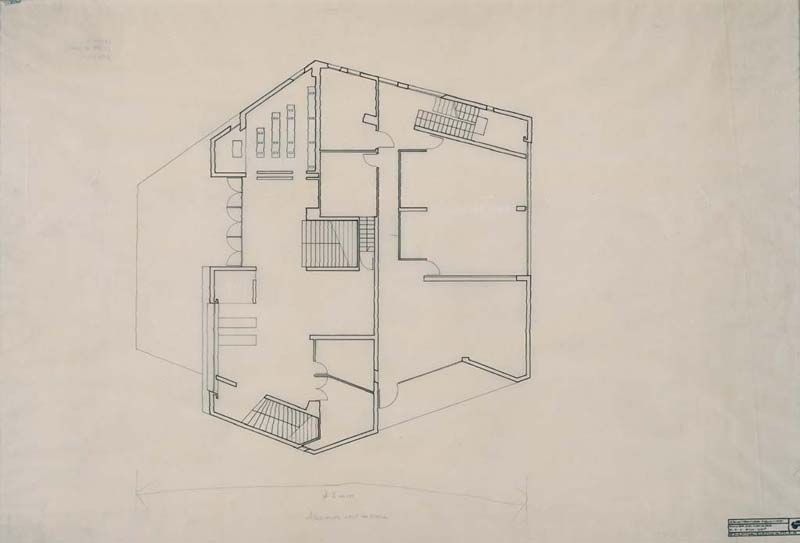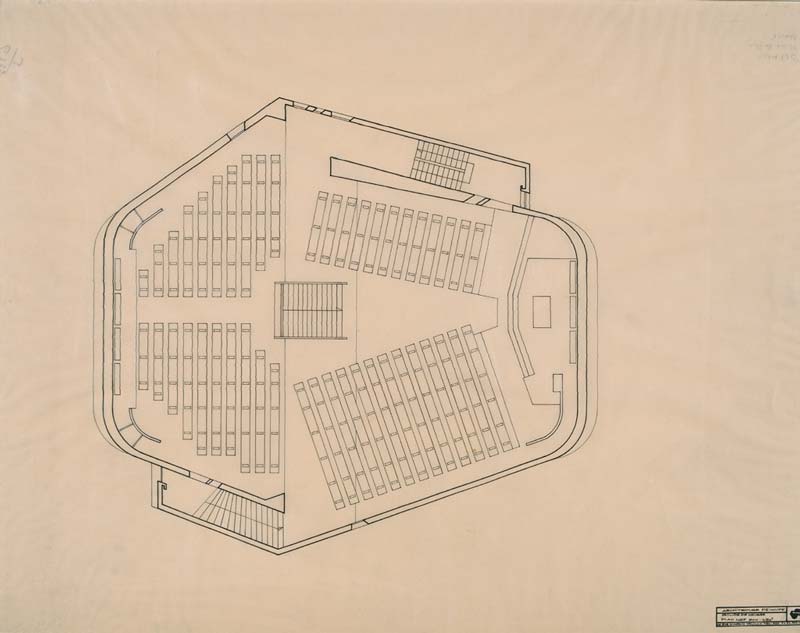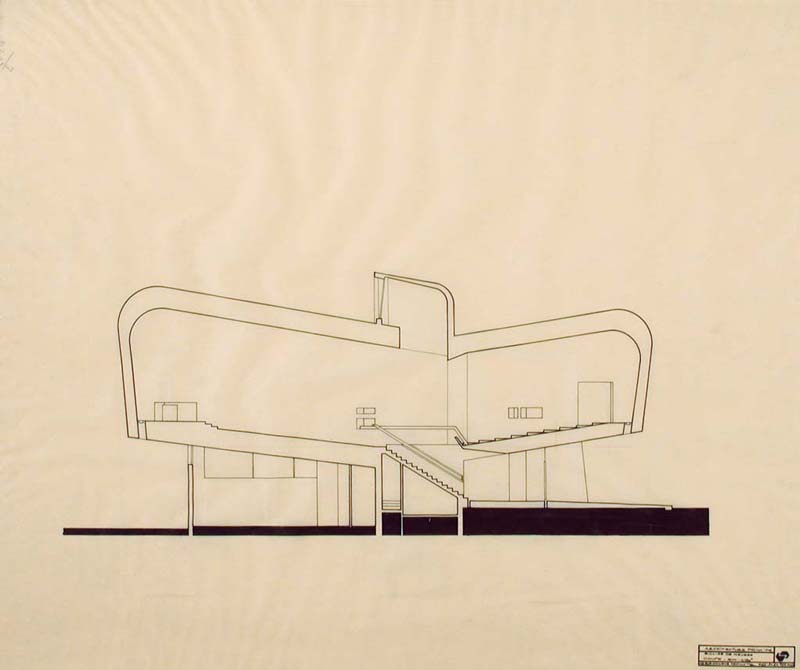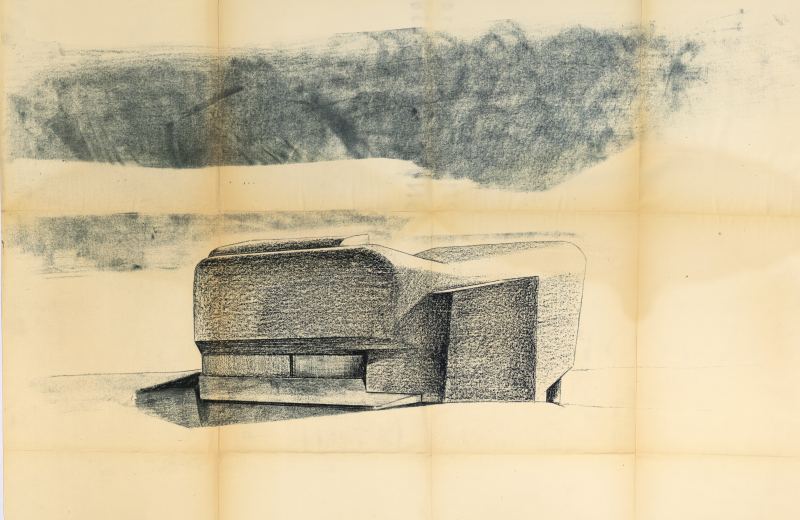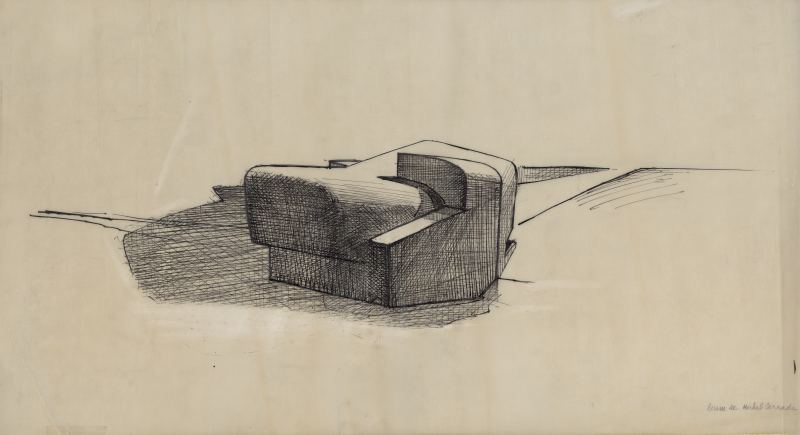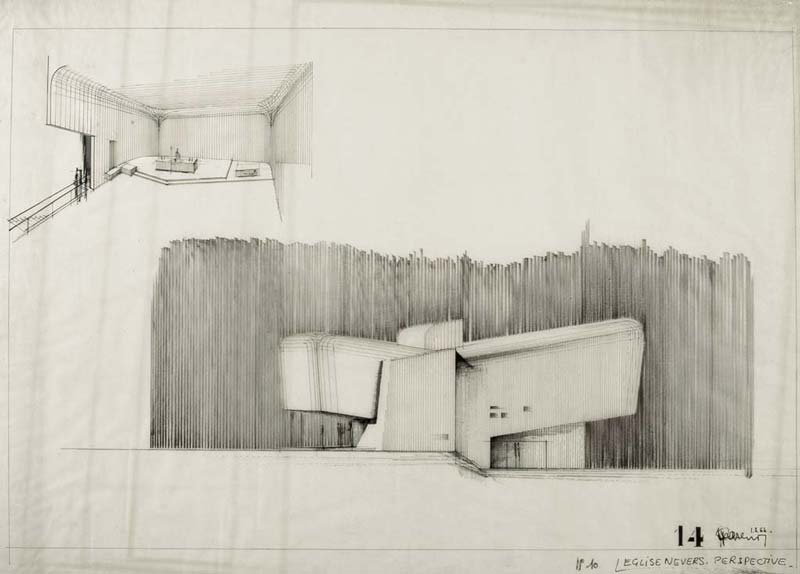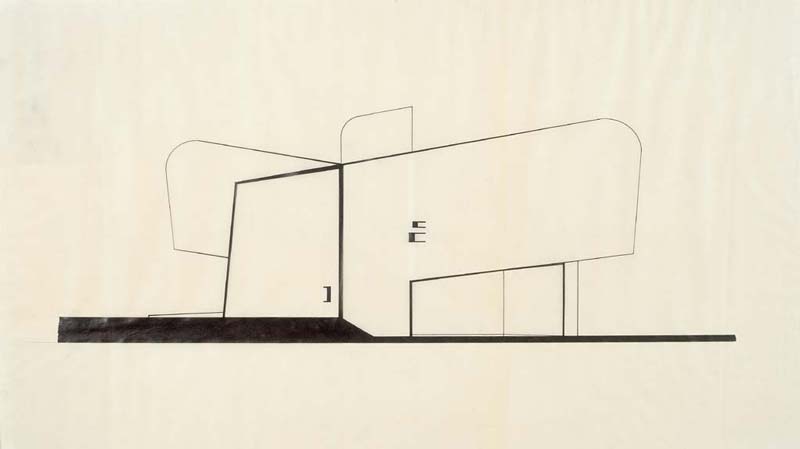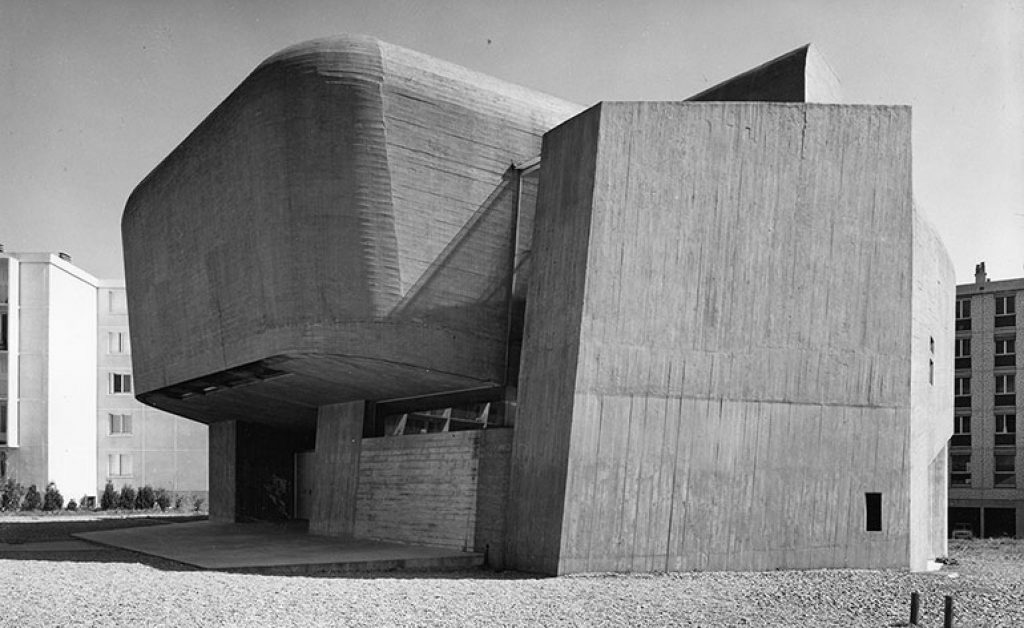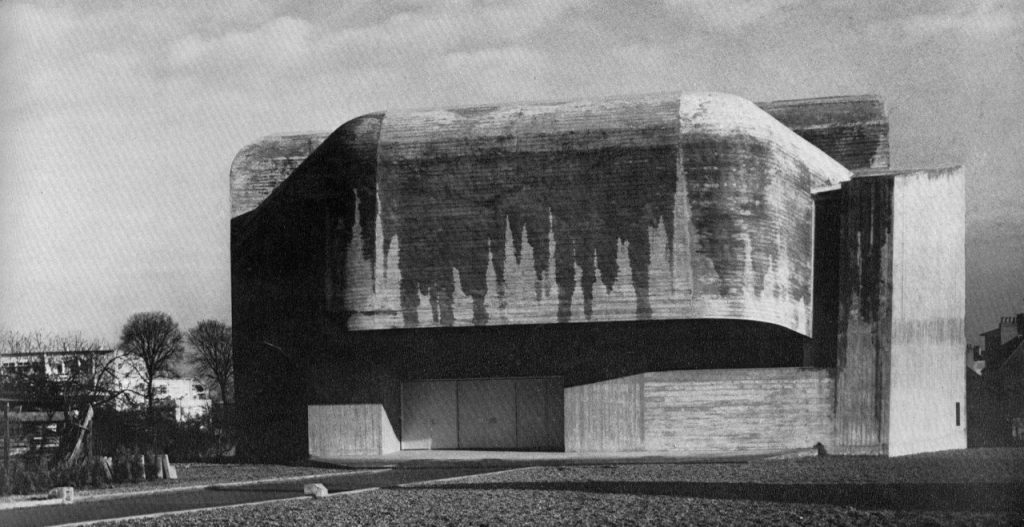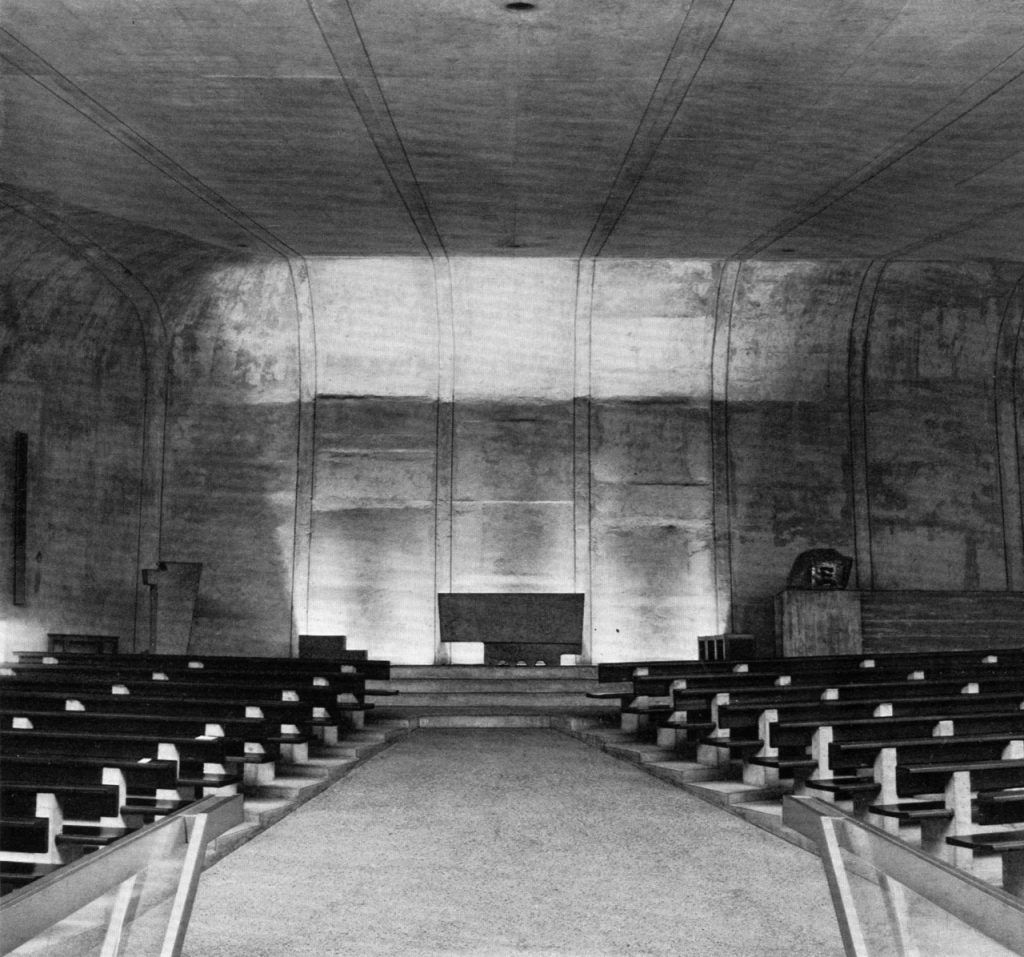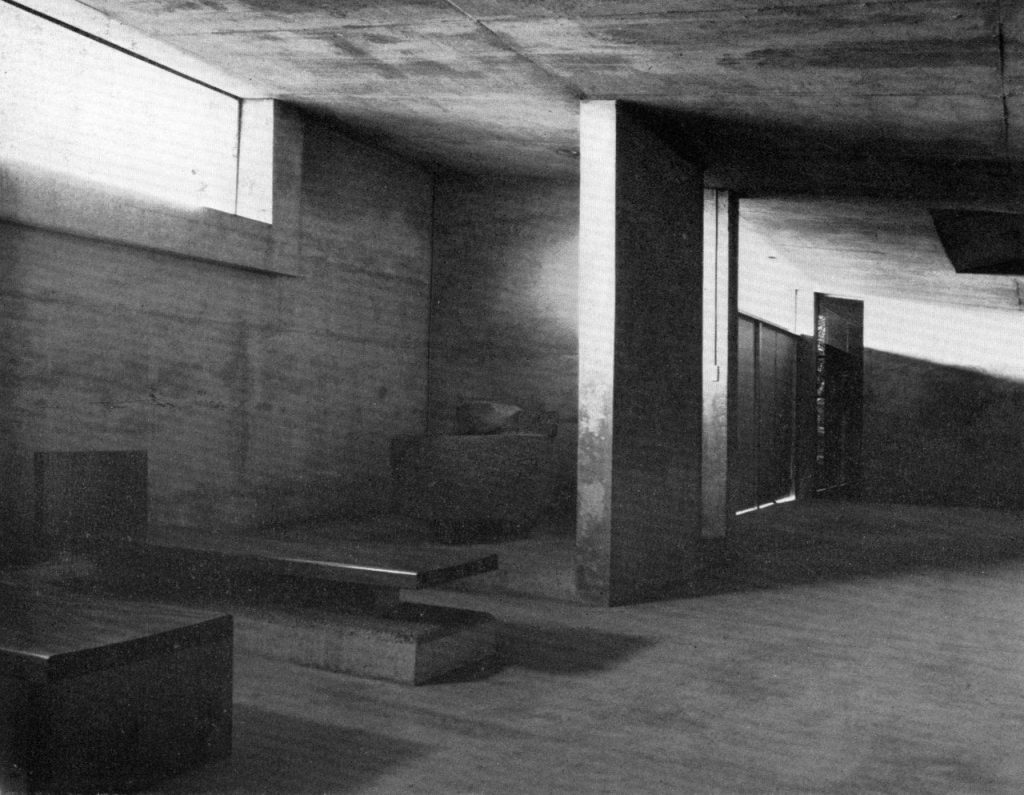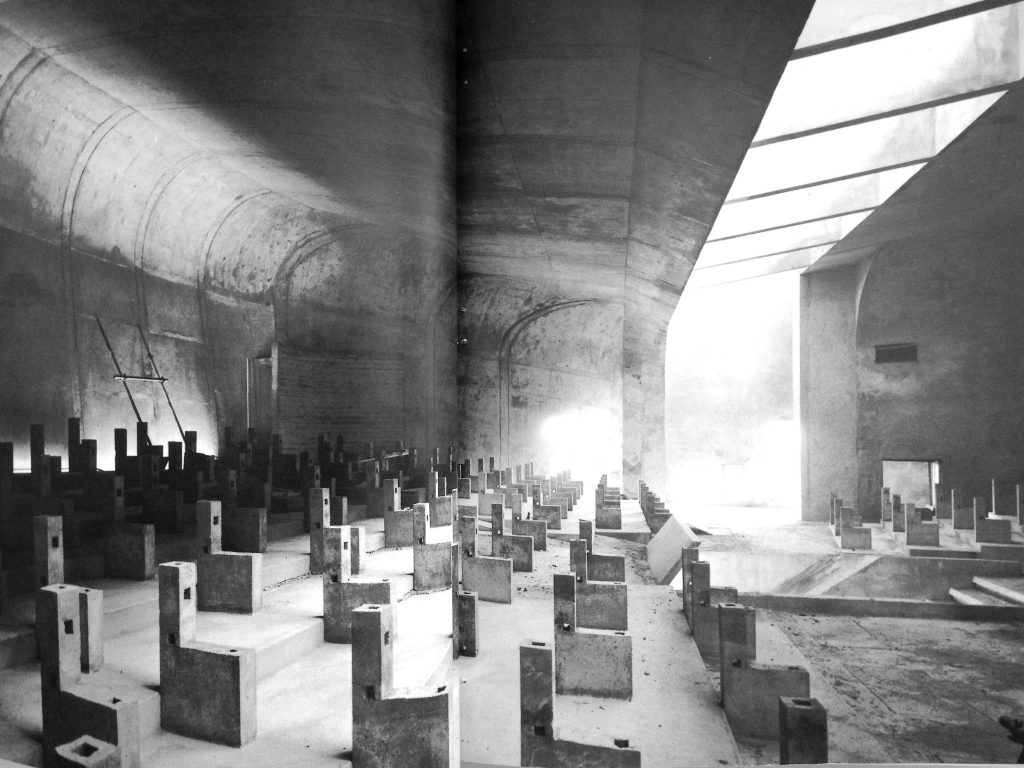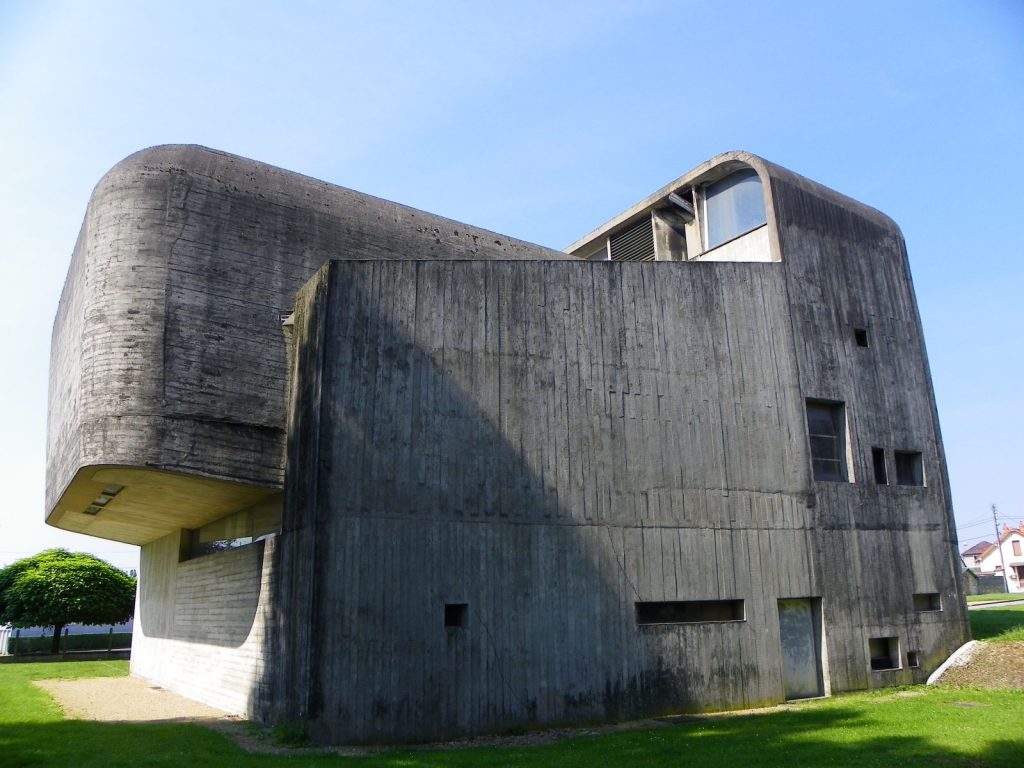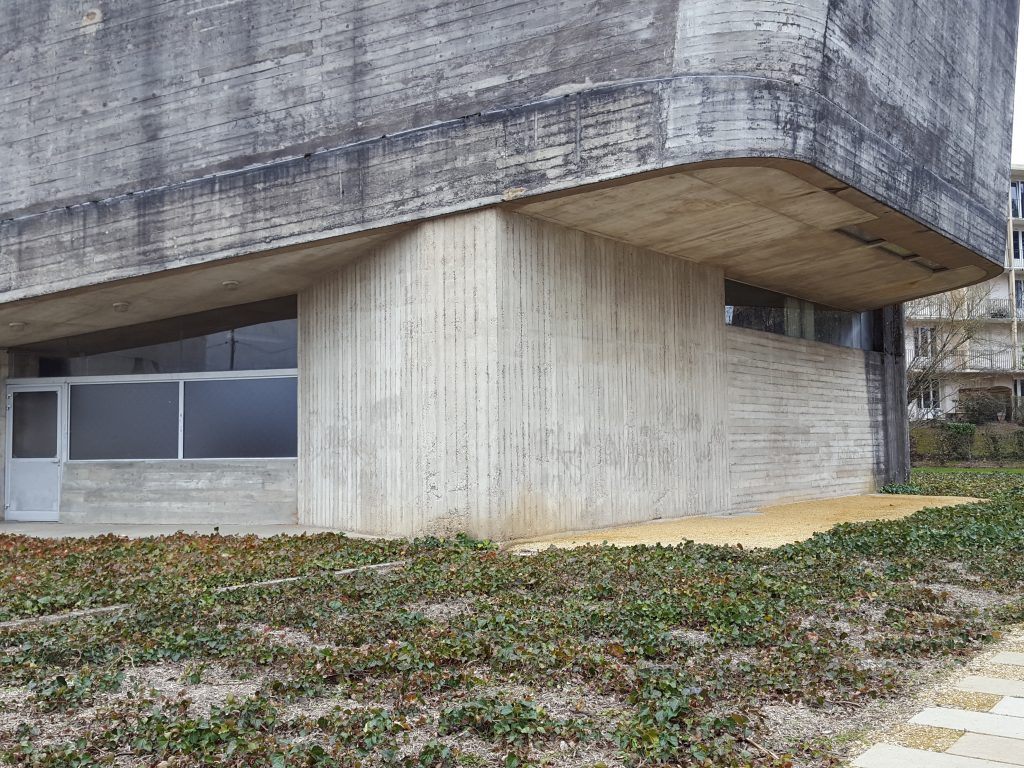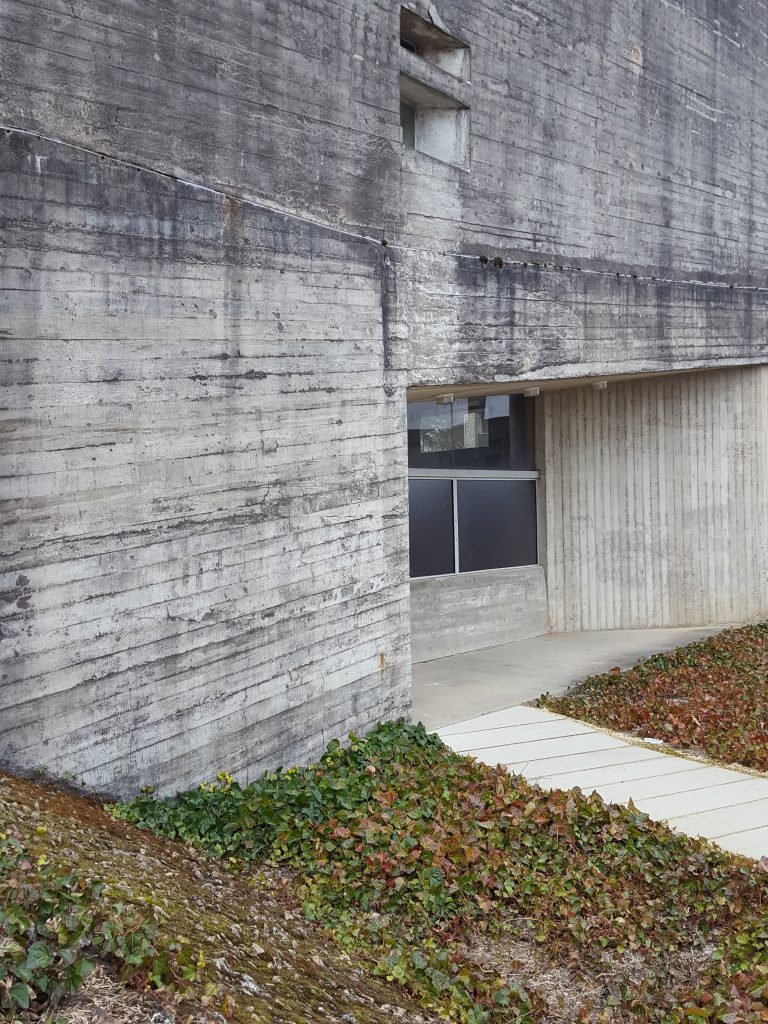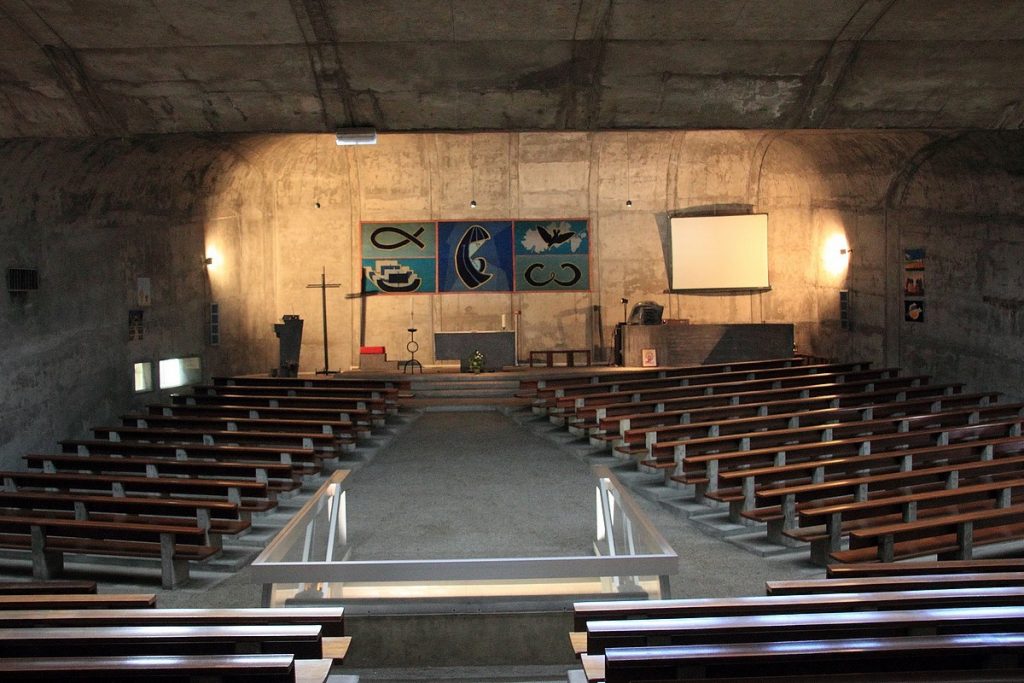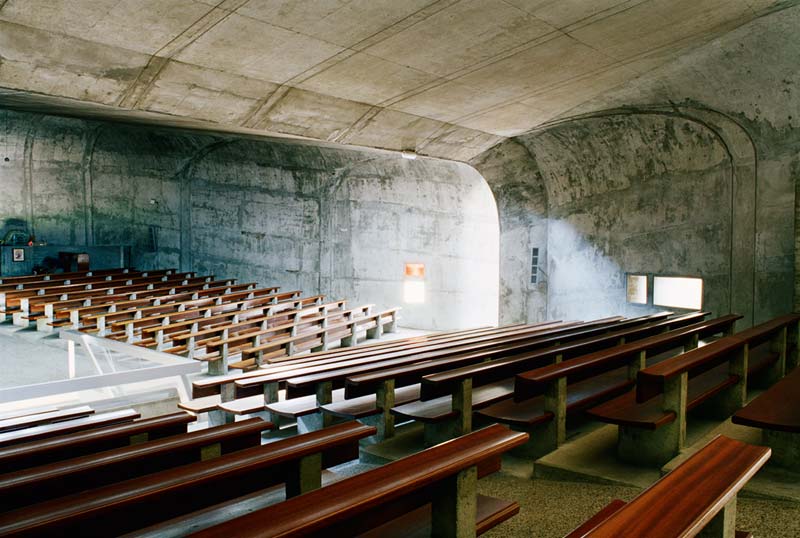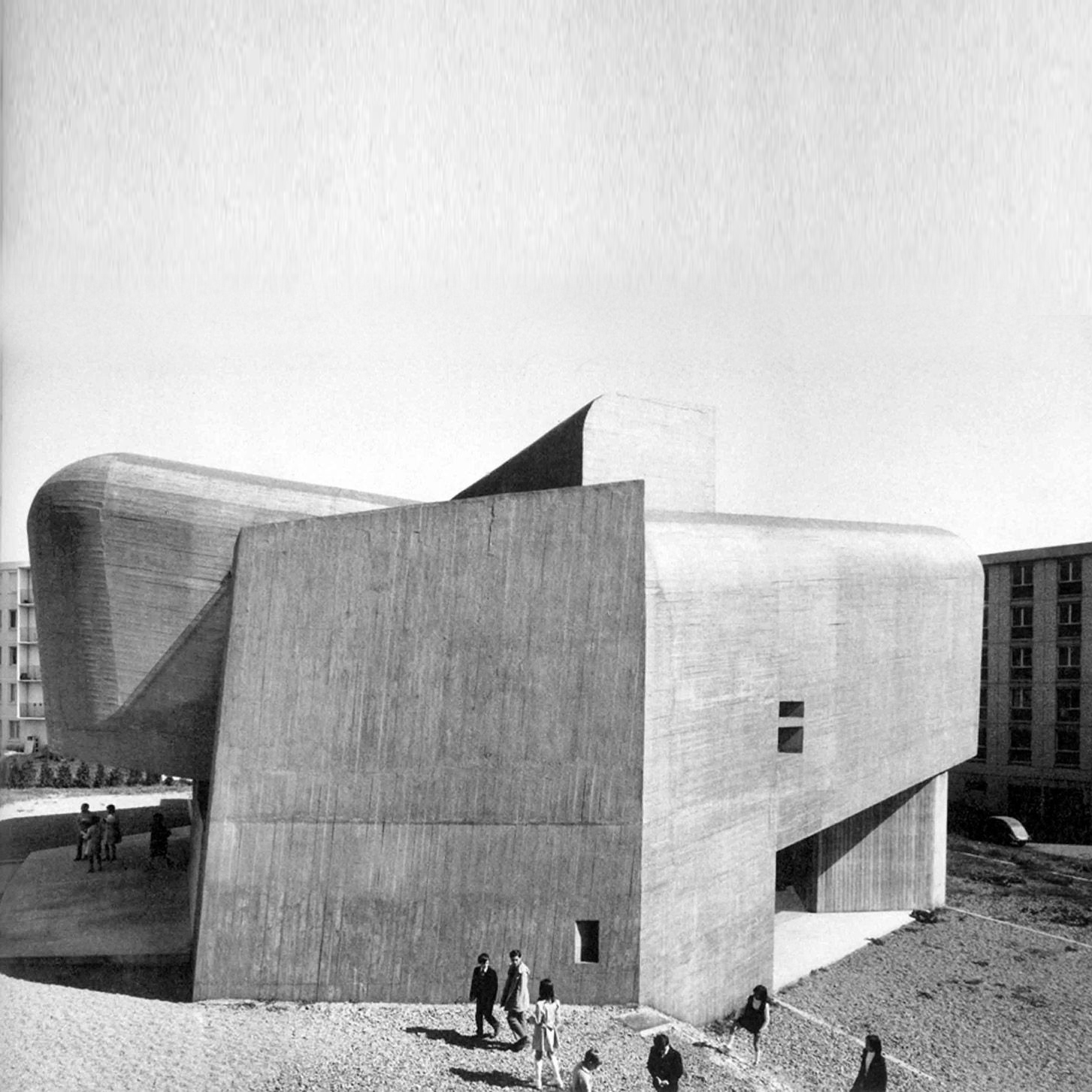Designed between 1963 and 1966, the Church of Sainte-Bernadette du Banlay in Nevers is the materialization of the crossing over of two lines of research: Paul Virilio’s “archeological” work on the bunkers of the Atlantic Wall (Bunker Archeology, 1958-1975) and Claude Parent’s research and critique of the modern plan exploring the concept of fracture and tipping over. The church of Banlay powerfully expresses this fracture in two heavy masses cantilevered over a central pillar that constitutes the junction point. For Parent, it is a “fault line.” This fracture, the determining element in the development of the project, enabled the designers to rethink, with the same tension, the unity and the discontinuity of the space. Dedicated to Bernadette Soubirous, the building also seeks to be the architectural transcription of the grotto where the saint witnessed her first apparitions. A “cryptic space,” a genuine monolithic and totally hermetic carapace, Sainte-Bernadette shocked the minds of a period still deeply affected by World War II and terrorized by the cold war and the constant nuclear threat. In his book Bunker Archeology, Virilio evoked these “concrete alters built facing the void of the ocean,” the funerary architecture of Egyptian mastabas and Etruscan tombs. He poeticized their immobile wait, remarking the anthropomorphic character of these capsized silhouettes. Sainte-Bernadette is a sacred space in which military language is introduced in the paradox: the bunker as a figure of oppression and of refuge, the grotto as the incarnation of humanity’s origins but also of the tomb, and the Church as a symbol of introspection and of ascension towards the light.
Proyectada entre 1963 y 1966, la Iglesia de Sainte-Bernadette du Banlay en Nevers es la materialización del cruce de dos líneas de investigación: el trabajo arqueológico de Paul Virilio sobre los bunkers en el Muro Atlántico (Bunker arquelogía, 1958-1975) y la investigación y crítica de Claude Parent sobre la planta moderno, explorando el concepto de fractura y vuelco. La iglesia de Banlay expresa de manera rotunda esta fractura con dos pesadas masas en voladizo sobre un pilar central que constituye un punto de unión. Para Parent es una falla. Esta fractura, el elemento determinante en el desarrollo del proyecto, permite a los creadores repensar, con la misma tensión, la unidad y la discontinuidad del propio espacio. Dedicada a Bernadette Soubirous, el edificio también buscar la transcripción arquitectónica del concepto de gruta donde la santa fue testigo de sus primeras apariciones. Un “espacio críptico”, un caparazón monolítico y totalmente hermético, Sainte-Bernadette conmocionó las mentes de un período aún profundamente afectado por la Segunda Guerra Mundial y aterrorizado por la guerra fría y la constante amenaza nuclear. En su libro Bunker Archaeology, Virilio evocó estos “alters” de hormigón construidos frente al vacío del océano”, la arquitectura funeraria de las tumbas egipcias mastabas y etruscas. Virilio poetizó su espera inmóvil remarcando el carácter antropomórfico de estas siluetas dadas las vuelta. Sainte-Bernadette es un espacio sagrado en el cual, el lenguaje militar se introduce de un modo paradójico: el búnker como figura de opresión y refugio, la gruta como la encarnación de los orígenes de la humanidad, pero también de la tumba, y la Iglesia como símbolo de introspección y de ascensión hacia la luz.
Text via Frac Centre-Val de Loire
More information about Claude Parent projects and drawings in the book Claude Parent: Visionary Architect
Más información sobre los proyectos y dibujos de Claude Parent en el libro Claude Parent: Visionary Architect
